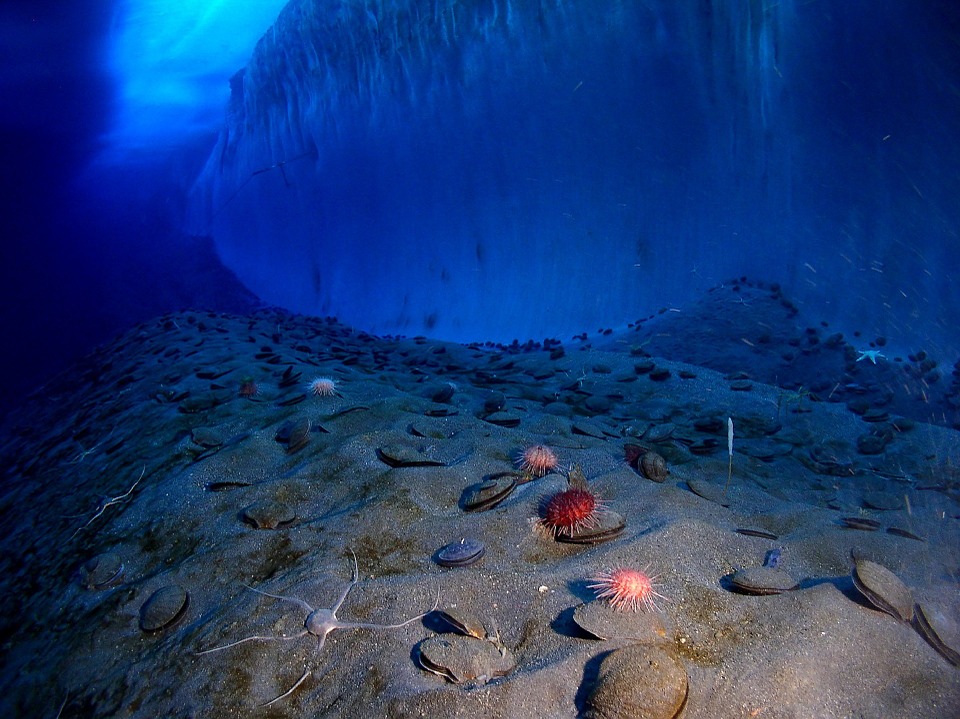Over time, scientists at Antarctica have made discoveries that shed some light on the Earth’s history. In a 2014 documentary, a group of divers made a move to explore the almost pristine ecosystem that the frozen continent has under the ice.
In the documentary titled Under the Ice, the group of divers prepared to go into the -2 degrees Celsius water, and the divers shared their experience as they explored what was under the ice. The divers were in the shallower end of the water as that was where they could see the most activity. The divers found ice crystals at the bottom of the ocean, also known as anchor ice.
“In shallow places like this, ice forms on almost anything the water touches, so it grows into an ice garden. Sometimes it picks up stones, or even living creatures like this sea urchin and carries them up to the ceiling.” said the narrator.
The divers then heard strange noises that they likened to the sounds that could only be heard in science-fiction. The sounds were actually Waddell seal calls, suggesting that they needed to go to the nearest hole for air. The divers also said that the water under the ice was the clearest they have seen. “At this time of year, you can see almost a quarter of a mile ahead.”
Aside from sea urchins and sea stars, the divers were amazed to find other unusual sea creatures inhabiting the frozen ocean. They found species of sea spiders that are larger than their fellow arachnids, as well as species of anemone and jelly. The scientists explained that the isolation from the sea creatures that live in warmer waters is what makes these antarctic sea creatures evolve differently, and their slow metabolism due to the freezing temperatures results in these creatures growing larger and older.
The documentary added that because there is hardly any sunlight, nothing much else is growing under the water. These conditions have the creatures fighting to survive, citing the anemone as an example. “Everything is hungry - the anemone might look pretty - but it’s a ravenous predator.”



 CDC Vaccine Review Sparks Controversy Over Thimerosal Study Citation
CDC Vaccine Review Sparks Controversy Over Thimerosal Study Citation  SpaceX’s Starship Completes 11th Test Flight, Paving Way for Moon and Mars Missions
SpaceX’s Starship Completes 11th Test Flight, Paving Way for Moon and Mars Missions  Cogent Biosciences Soars 120% on Breakthrough Phase 3 Results for Bezuclastinib in GIST Treatment
Cogent Biosciences Soars 120% on Breakthrough Phase 3 Results for Bezuclastinib in GIST Treatment  FDA Adds Fatal Risk Warning to J&J and Legend Biotech’s Carvykti Cancer Therapy
FDA Adds Fatal Risk Warning to J&J and Legend Biotech’s Carvykti Cancer Therapy  Tabletop particle accelerator could transform medicine and materials science
Tabletop particle accelerator could transform medicine and materials science  NASA Astronauts Wilmore and Williams Recover After Boeing Starliner Delay
NASA Astronauts Wilmore and Williams Recover After Boeing Starliner Delay  Lab-grown meat: you may find it icky, but it could drive forward medical research
Lab-grown meat: you may find it icky, but it could drive forward medical research  Trump Signs Executive Order to Boost AI Research in Childhood Cancer
Trump Signs Executive Order to Boost AI Research in Childhood Cancer  Lost in space: MethaneSat failed just as NZ was to take over mission control – here’s what we need to know now
Lost in space: MethaneSat failed just as NZ was to take over mission control – here’s what we need to know now  Ancient Mars may have had a carbon cycle − a new study suggests the red planet may have once been warmer, wetter and more favorable for life
Ancient Mars may have had a carbon cycle − a new study suggests the red planet may have once been warmer, wetter and more favorable for life  NASA Faces Major Workforce Reduction as 20% of Employees Prepare to Leave
NASA Faces Major Workforce Reduction as 20% of Employees Prepare to Leave  Eli Lilly’s Inluriyo Gains FDA Approval for Advanced Breast Cancer Treatment
Eli Lilly’s Inluriyo Gains FDA Approval for Advanced Breast Cancer Treatment  Astronomers have discovered another puzzling interstellar object − this third one is big, bright and fast
Astronomers have discovered another puzzling interstellar object − this third one is big, bright and fast 



























